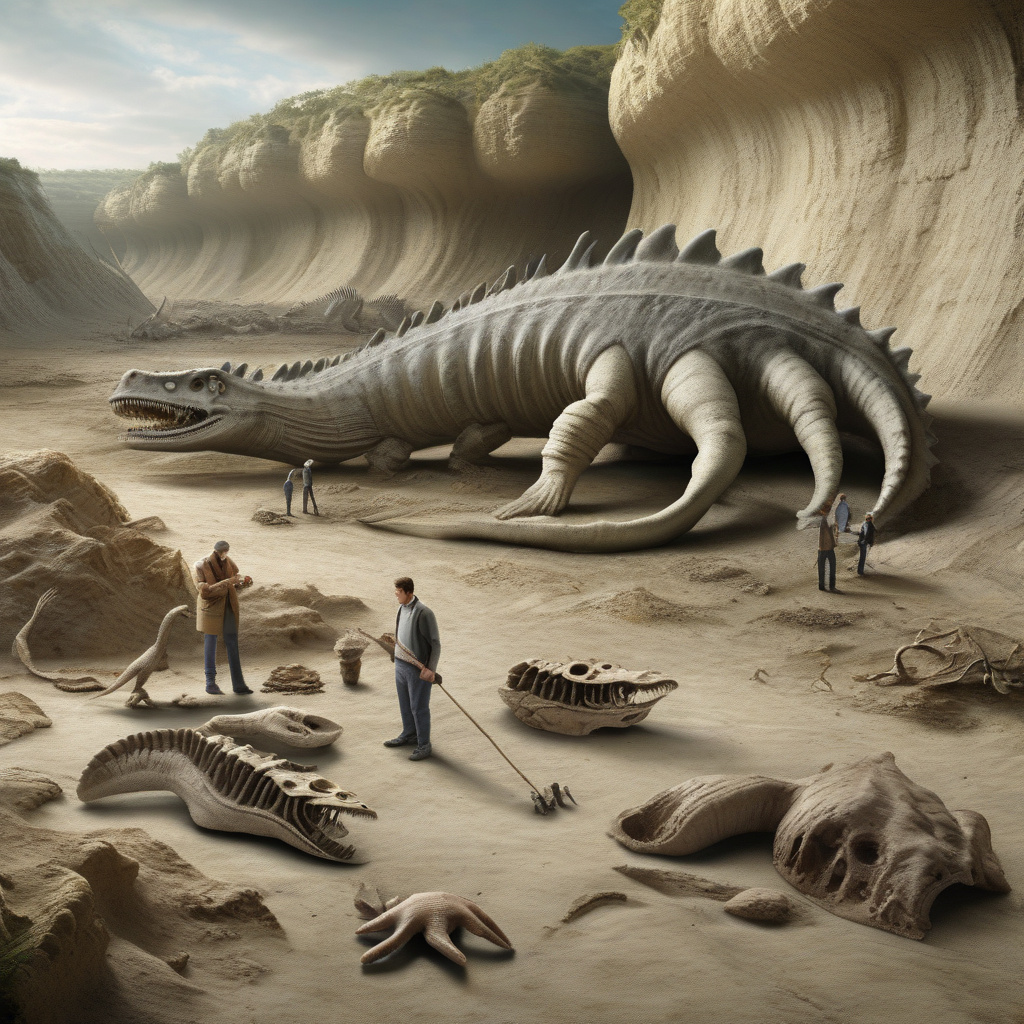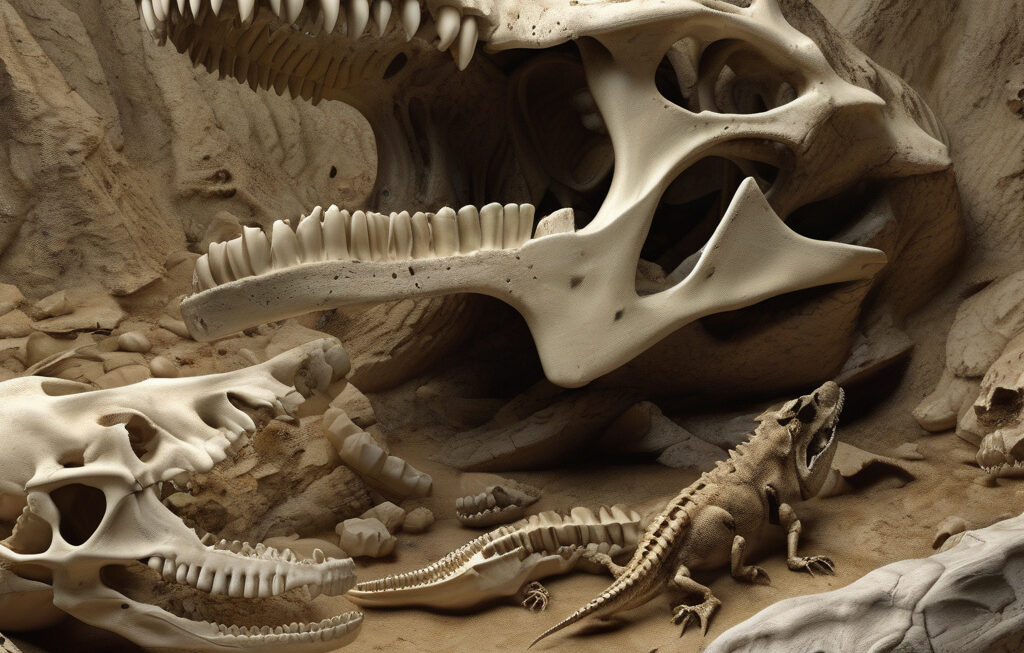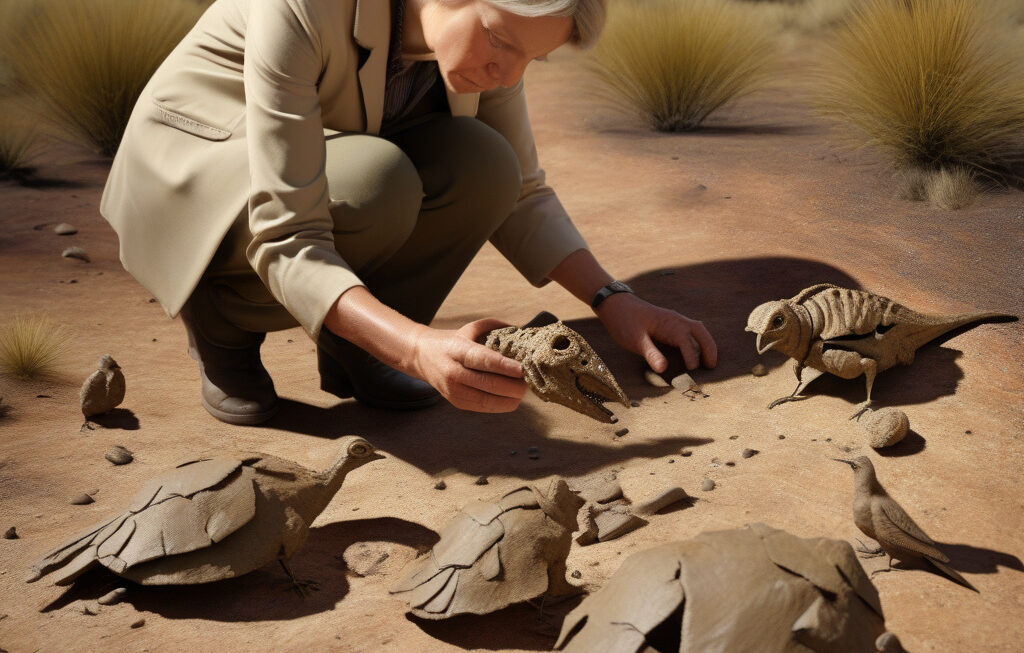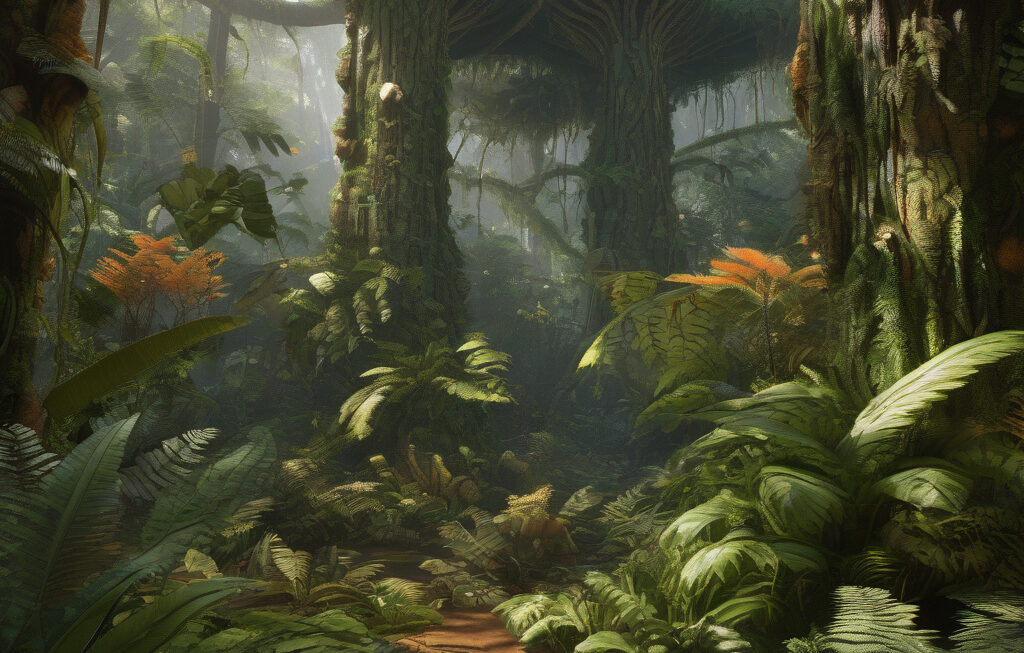183-Million-Year-Old Sea Monster Species Found Hiding in German Fossil Bed
A new species of ancient marine reptile, a plesiosaur, has been identified that swam the seas approximately 183 million years ago. Discovered in a German fossil bed, this remarkable find sheds light on the diverse and fascinating creatures that roamed our oceans during the Jurassic period.
The plesiosaur, named Luskhan itilensis, possessed a unique set of features that set it apart from other known species of its kind. With a long neck, sharp teeth, and powerful flippers, it was a formidable predator in the ancient seas. Its streamlined body and efficient swimming abilities would have made it a successful hunter, preying on fish and other marine creatures with ease.
This discovery is significant not only for what it reveals about the evolutionary history of marine reptiles but also for the insights it provides into the ancient ecosystems of the Jurassic period. By studying the remains of Luskhan itilensis and other prehistoric creatures, scientists can piece together a more comprehensive understanding of how life evolved and diversified in our planet’s oceans over millions of years.
The fossil bed in Germany where Luskhan itilensis was found has proven to be a treasure trove of ancient marine life. In addition to the plesiosaur, researchers have uncovered the remains of other sea creatures, including ichthyosaurs and ancient fish species. Each new discovery adds to the growing body of knowledge about the rich biodiversity that existed in Earth’s oceans long before the arrival of humans.
The process of identifying and studying ancient fossils is a meticulous and time-consuming endeavor. Paleontologists carefully extract, clean, and analyze each specimen to unlock its secrets and piece together the puzzle of the past. Through advanced imaging techniques and comparative anatomy studies, researchers can reconstruct the appearance and behavior of long-extinct animals with remarkable accuracy.
In addition to expanding our scientific knowledge, discoveries like the Luskhan itilensis plesiosaur also capture the imagination of the public and inspire awe and wonder at the diversity of life that has existed on our planet. The idea of giant sea monsters swimming through ancient oceans evokes a sense of mystery and excitement, reminding us of the vast unknown territories that still lie beneath the waves.
As technology and research methods continue to advance, we can expect even more incredible discoveries to be made in the field of paleontology. New species will be identified, existing theories will be challenged, and our understanding of the natural world will be enriched. The story of Luskhan itilensis is just one chapter in the ongoing saga of exploration and discovery that drives scientific inquiry forward.
In conclusion, the finding of the 183-million-year-old plesiosaur species in a German fossil bed is a testament to the richness and complexity of Earth’s prehistoric past. By studying these ancient creatures, we gain valuable insights into the evolution of life on our planet and the interconnectedness of all living things. The discovery of Luskhan itilensis reminds us of the endless wonders waiting to be unearthed beneath the surface of our world’s history.
prehistoric, marine biology, paleontology, Jurassic period, scientific discovery












